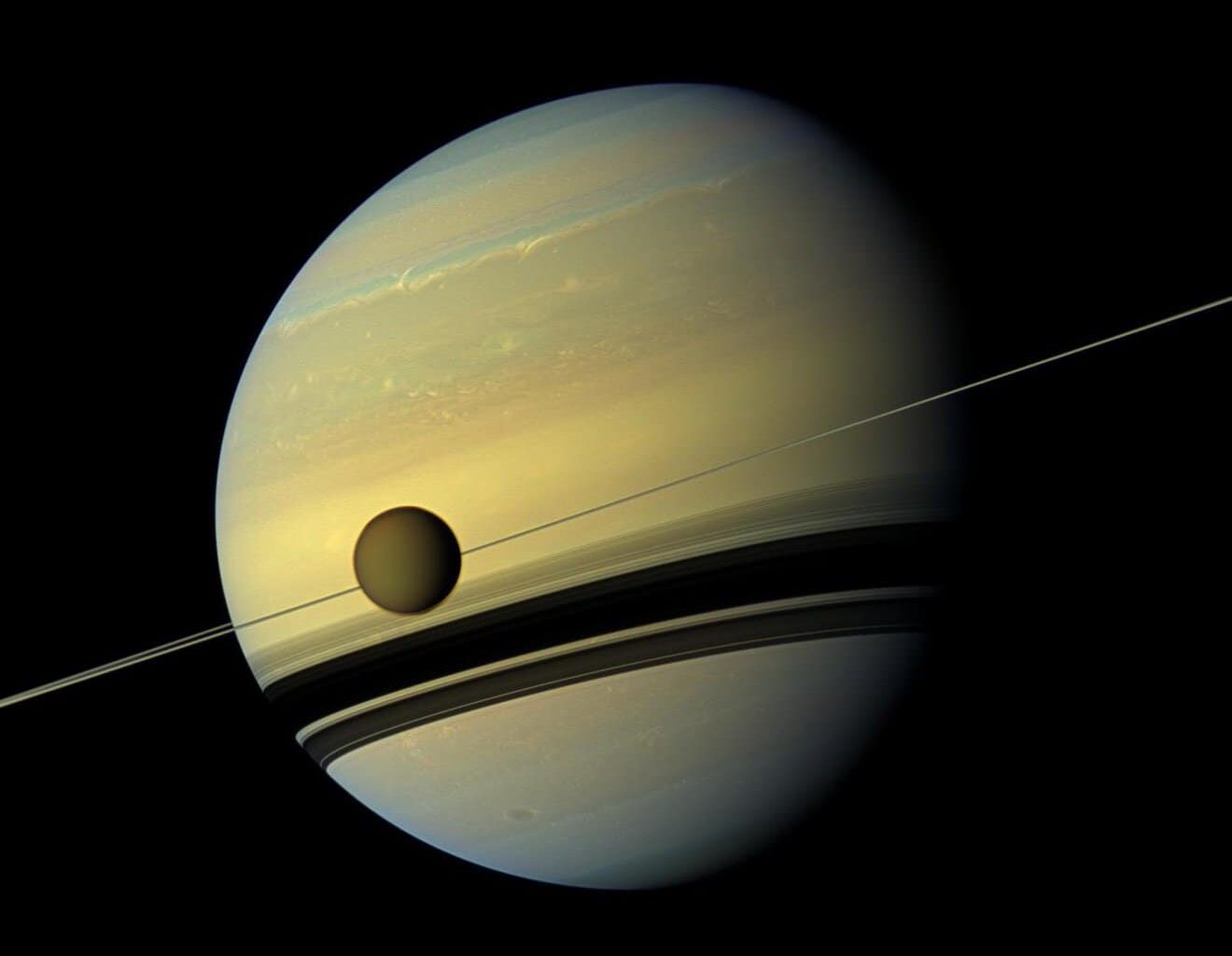For thirteen years, from 2004 to 2017, the Cassini-Huygens mission conducted a detailed survey of the Saturn system. It fundamentally altered our understanding of gas giants and their satellites and gave us a fair bit of surprise. Yet perhaps no satellite has been as surprising as largest moon, Titan.
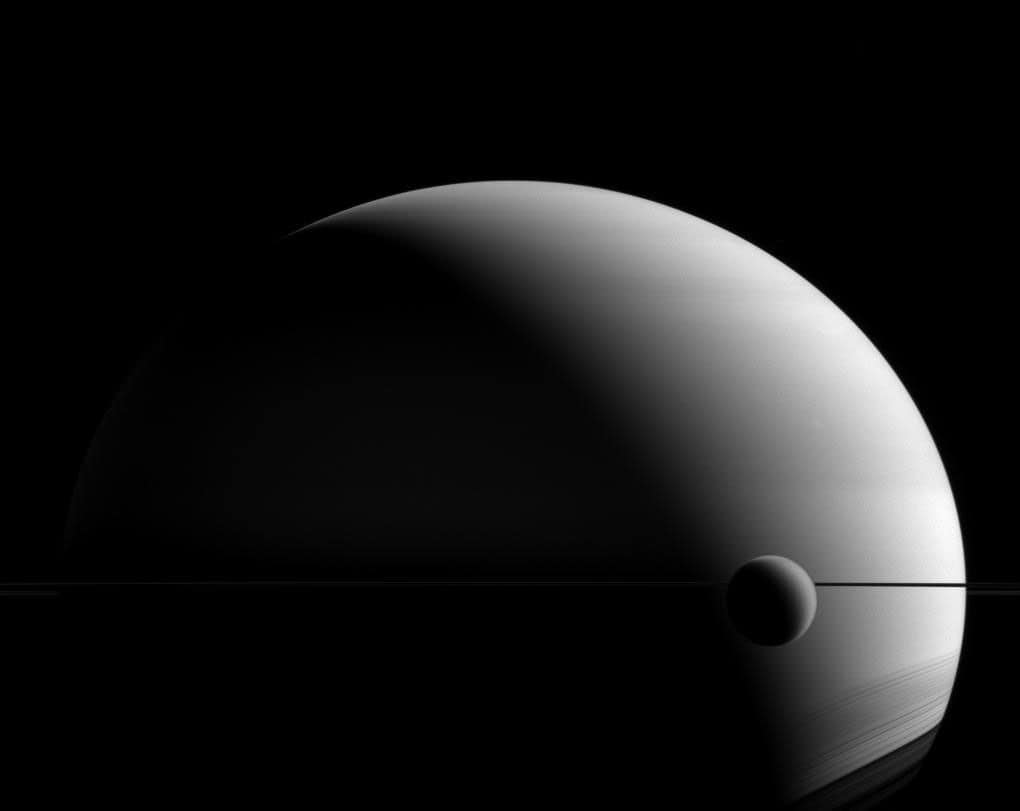 Cassini has sent some remarkable pictures which brilliantly illustrate the difference in size between Saturn and Titan, its largest moon. Cassini’s information helped us get new insights into our solar system. Image credits: NASA.
Cassini has sent some remarkable pictures which brilliantly illustrate the difference in size between Saturn and Titan, its largest moon. Cassini’s information helped us get new insights into our solar system. Image credits: NASA.
Saturn dwarfs its moon easily, even though Titan, at 3,200 miles across, is almost 50% bigger than Earth’s moon. If you look really closely above Saturn’s rings, there is a barely visible whitish speck. Saturn has much smaller moons, including Prometheus, which is only 53 miles in diameter.
The planet’s iconic ring system, once thought to be relatively placid, was shown to be remarkably dynamic. Composed of over 99% water ice, the ring particles range in size from micrometers to tens of meters. Cassini’s high-resolution imaging revealed intricate structures, including density waves, bending waves, and sharp-edged gaps maintained by the gravitational influence of small, embedded “shepherd” moons.
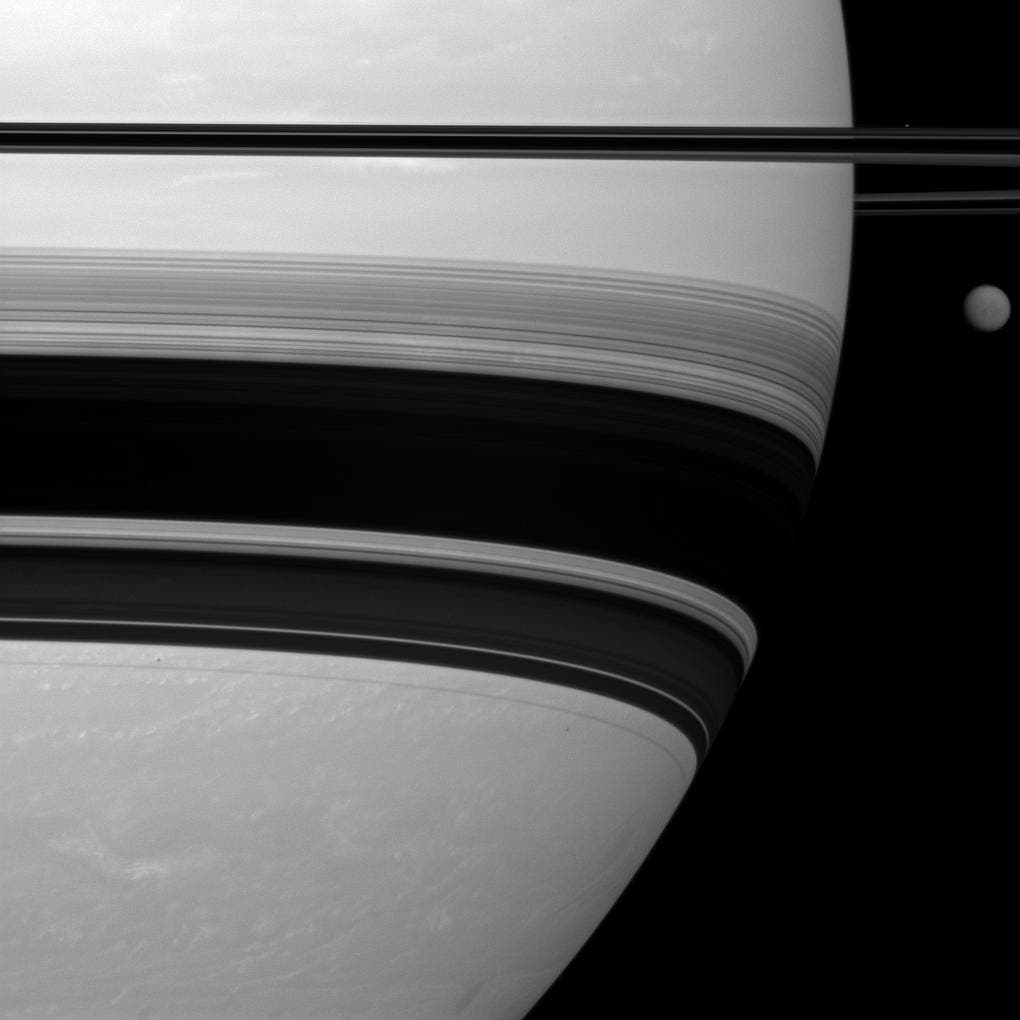 Saturn and Titan. The difference in size in this image is accentuated by the perspective. Click the picture for full resolution. Image credits: NASA.
Saturn and Titan. The difference in size in this image is accentuated by the perspective. Click the picture for full resolution. Image credits: NASA.
By penetrating its dense, opaque atmosphere, Cassini confirmed that Titan is not a static, frozen body but a geologically active world with a complex methane-based hydrological cycle that parallels Earth’s water cycle. The mission provided definitive evidence of stable surface liquids, complex organic chemical production, and weather systems. All of this suggests a landscape that is very alien, but at the same time, has serious Earth-like similarities.
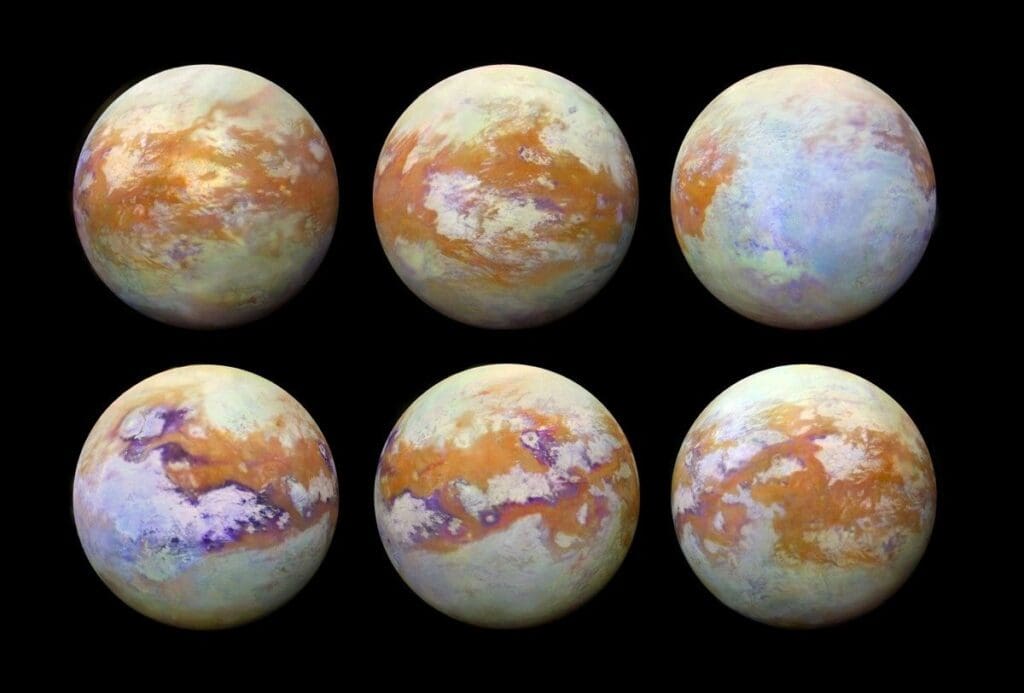 False-color image of Titan’s landscape, suggesting Earth-like geology. Image credits: NASA.
False-color image of Titan’s landscape, suggesting Earth-like geology. Image credits: NASA.
Titan is the only celestial body besides our own known to possess a dense atmosphere and stable surface liquid, with one key difference. Cassini’s instruments, particularly its radar mapper, which pierced the moon’s ubiquitous orange haze, confirmed the existence of a robust methane (CH4) cycle. Instead of water, Titan’s liquid cycle has hydrocarbons. At Titan’s frigid surface temperature of -179°C (-290°F), methane and ethane (C2H6) are liquid and behave much like water does on Earth.
The mission’s radar data mapped extensive fluvial channels, some stretching for hundreds of kilometers, which drain into lakes and seas. It also found canyons, some of which are covered by liquids.
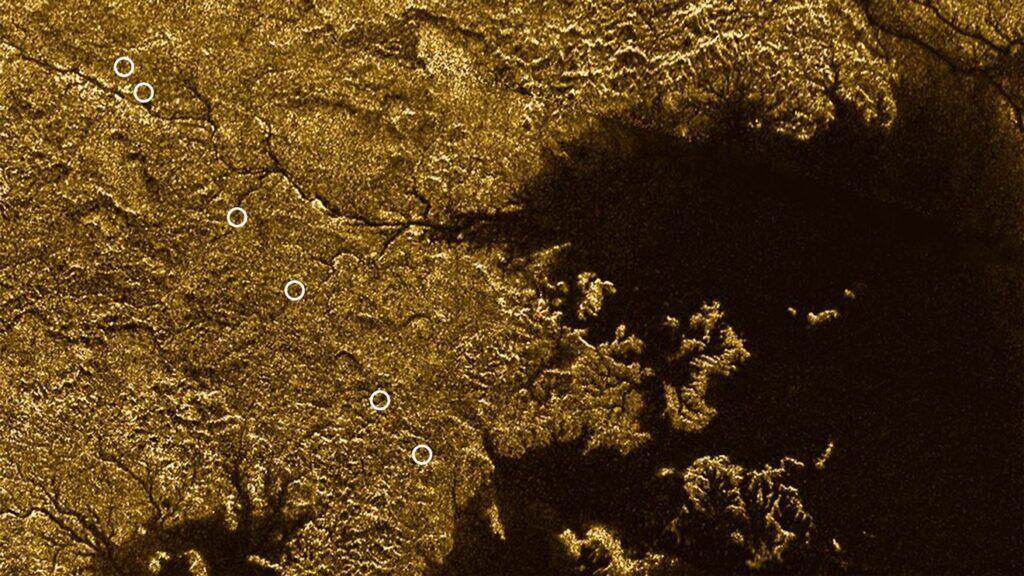 Flooded canyons on Titan. Image credits: NASA.
Flooded canyons on Titan. Image credits: NASA.
Beyond its polar seas, Titan’s equatorial regions are dominated by vast fields of linear dunes, some reaching heights of over 100 meters. Spectrographic analysis indicates these are not composed of silicate sand but of solid organic particulates.
This atmospheric chemistry makes Titan a compelling target for astrobiological research. The moon serves as a “prebiotic” model, a full-scale model of a planet rich in the kinds of organic chemistry thought to have preceded the origin of life on Earth. While no direct evidence of life has been found, the fundamental ingredients—complex organics, a liquid solvent (methane/ethane), and energy sources—are present.
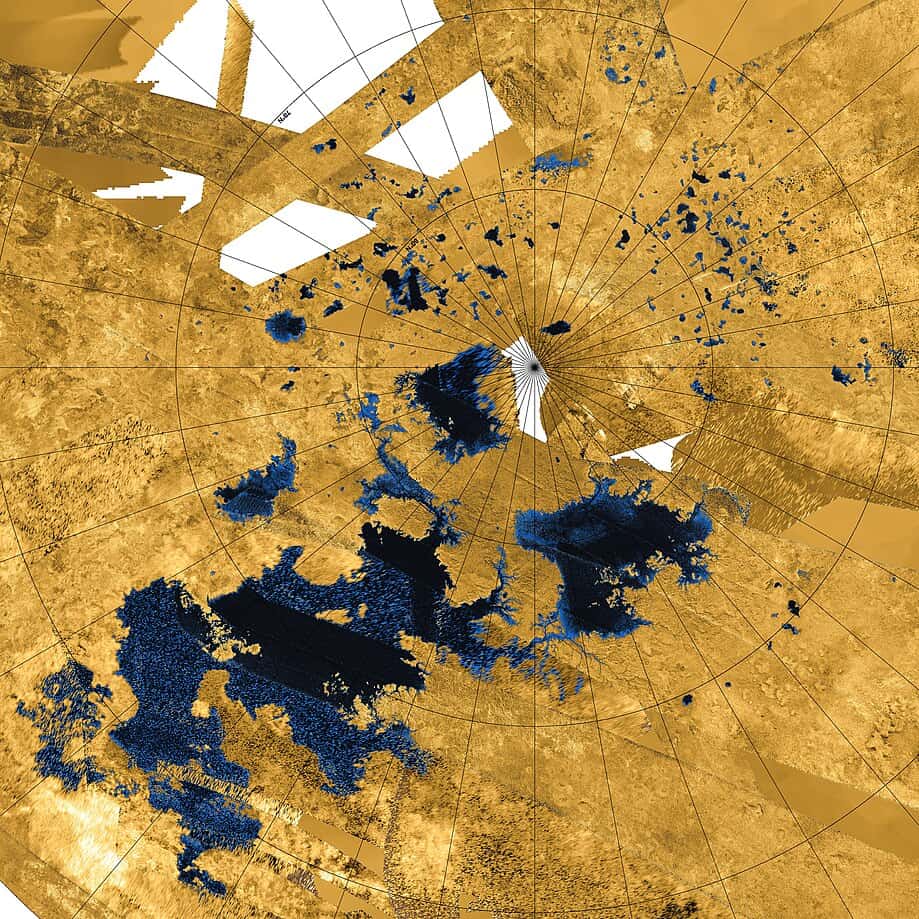 False-color, medium-resolution Cassini synthetic aperture radar mosaic of Titan’s north polar region, showing hydrocarbon seas, lakes, and tributary networks. Blue coloring indicates low radar reflectivity areas, caused by bodies of liquid ethane, methane and dissolved nitrogen. Image credits: NASA.
False-color, medium-resolution Cassini synthetic aperture radar mosaic of Titan’s north polar region, showing hydrocarbon seas, lakes, and tributary networks. Blue coloring indicates low radar reflectivity areas, caused by bodies of liquid ethane, methane and dissolved nitrogen. Image credits: NASA.
The data collected by Cassini-Huygens has laid the groundwork for future exploration, such as the Dragonfly rotorcraft mission, which will directly sample Titan’s surface materials to investigate its prebiotic chemistry and assess its potential for habitability. The Dragonfly mission is expected to launch in 2028.
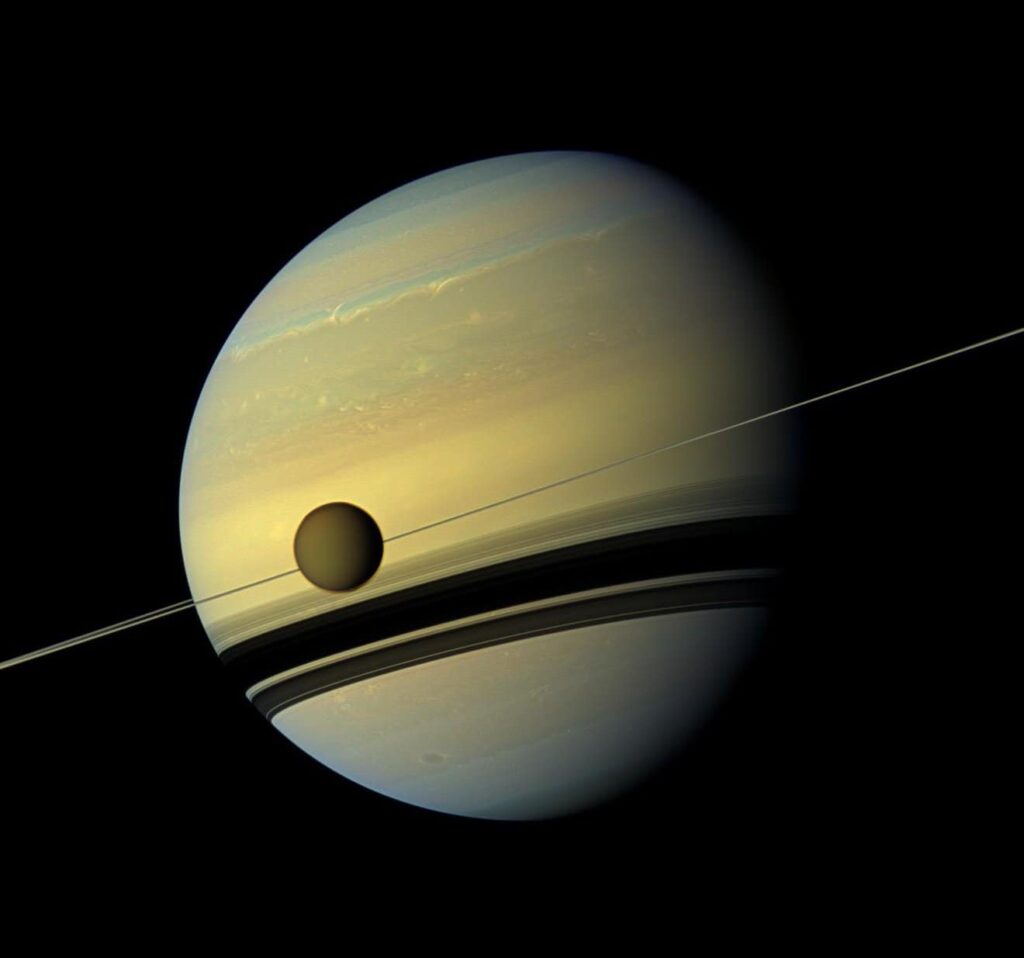 Saturn and Titan still have plenty of mysteries. Image credits: NASA.
Saturn and Titan still have plenty of mysteries. Image credits: NASA.
This article was originally published in 2012 and was edited to add later photos from Cassini and additional information.

